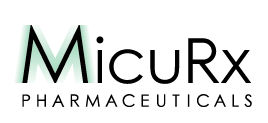预约演示
更新于:2025-05-07
Enterococcus faecium infection
粪肠球菌感染
更新于:2025-05-07
基本信息
别名 Enterococcus faecium infection、エンテロコッカス・フェシウム感染、屎肠球菌感染 + [1] |
简介- |
关联
20
项与 粪肠球菌感染 相关的药物靶点- |
作用机制- |
非在研适应症- |
最高研发阶段临床3期 |
首次获批国家/地区- |
首次获批日期1800-01-20 |
作用机制 50S subunit抑制剂 [+1] |
在研适应症 |
非在研适应症 |
最高研发阶段临床3期 |
首次获批国家/地区- |
首次获批日期1800-01-20 |
靶点- |
作用机制- |
在研机构 |
原研机构 |
在研适应症 |
非在研适应症 |
最高研发阶段临床1/2期 |
首次获批国家/地区- |
首次获批日期1800-01-20 |
25
项与 粪肠球菌感染 相关的临床试验NCT06942624
Phage Therapy for the Treatment of a Chronic Enterococcus Faecium Periprosthetic Joint Infection
This purpose of this clinical trial is to evaluate the safety, tolerability and efficacy of a bacteriophage therapy in a patient with a methicillin-susceptible Enterococcus faecium (E. faecium) prosthetic joint infection (PJI) of the hip. We have exhausted all surgical and medical management of PJI for our patient.
The phage will be administered to the study patient during a 14 days period via intravenous and intra-articular. The patient will be monitored in clinic for up to 1 year.
The phage will be administered to the study patient during a 14 days period via intravenous and intra-articular. The patient will be monitored in clinic for up to 1 year.
开始日期2025-05-01 |
申办/合作机构 |
NCT06815549
An Open Clinical Trial of the Safety and Efficacy of the Drug Fluorothiazinone, 300 Mg Tablets (Gamaleya Research Institute of Epidemiology and Microbiology, Health Ministry of the Russian Federation) with the Participation of Adult Patients with Chronic Bacterial Cystitis"
This study is designed to evaluate the safety, clinical efficacy and antibacterial activity of the drug Fluorothiazinone, 300 mg tablets, (Gamaleya Research Institute of Epidemiology and Microbiology, Health Ministry of the Russian Federation) in the mode of antibacterial monotherapy with the participation of adult patients with chronic bacterial cystitis.
The main objectives of this study are:
1. To evaluate the safety of the use of the drug Fluorothiazinone according to the indicators
1. adverse events/reactions;
2. serious adverse events/reactions;
3. deviations from clinical and laboratory parameters.
2. To evaluate the therapy effectiveness:
1. clinical cure - complete resolution or improvement of the signs and symptoms of chronic cystitis that were present at baseline and the absence of new symptoms requiring antimicrobial therapy on days 7, 14 and 28 after the start of therapy;
2. the timing of the disappearance of symptoms according to the patient's subjective feelings;
3. microbiological response when comparing pre-treatment and post-treatment cultures;
4. changes on VAS (visual analogue scale) for pain intensity determination;
5. changes on PUF (Pelvic pain and urgency/frequency patient symptom scale) for assessing symptoms by patients;
6. changes on ACSS (acute cystitis symptom scale);
7. development of relapses within 90 days after the start of therapy.
3. To collect clinical isolates of pathogens for molecular genetic analysis. The identification of DNA and the determination of the bacterial genotype will allow us to assess the microbiological outcomes such as relapse or reinfection.
4. To determine the sensitivity of the obtained isolates to antibiotics.
The main objectives of this study are:
1. To evaluate the safety of the use of the drug Fluorothiazinone according to the indicators
1. adverse events/reactions;
2. serious adverse events/reactions;
3. deviations from clinical and laboratory parameters.
2. To evaluate the therapy effectiveness:
1. clinical cure - complete resolution or improvement of the signs and symptoms of chronic cystitis that were present at baseline and the absence of new symptoms requiring antimicrobial therapy on days 7, 14 and 28 after the start of therapy;
2. the timing of the disappearance of symptoms according to the patient's subjective feelings;
3. microbiological response when comparing pre-treatment and post-treatment cultures;
4. changes on VAS (visual analogue scale) for pain intensity determination;
5. changes on PUF (Pelvic pain and urgency/frequency patient symptom scale) for assessing symptoms by patients;
6. changes on ACSS (acute cystitis symptom scale);
7. development of relapses within 90 days after the start of therapy.
3. To collect clinical isolates of pathogens for molecular genetic analysis. The identification of DNA and the determination of the bacterial genotype will allow us to assess the microbiological outcomes such as relapse or reinfection.
4. To determine the sensitivity of the obtained isolates to antibiotics.
CTR20244801
利奈唑胺干混悬剂在健康受试者中随机、开放、单次给药、两制剂、两序列、两周期、交叉空腹状态下生物等效性试验
主要目的:以石药集团中诺药业(石家庄)有限公司生产的利奈唑胺干混悬剂为受试制剂,以Pfizer Service Company BVBA生产的利奈唑胺干混悬剂(商品名:Zyvox®)为参比制剂,按生物等效性试验的相关规定,比较利奈唑胺干混悬剂在健康受试者体内的药代动力学行为,评价两种制剂的生物等效性。
次要目的:评价健康受试者单次空腹口服利奈唑胺干混悬剂受试制剂和参比制剂后的安全性。
开始日期2025-01-07 |
申办/合作机构 |
100 项与 粪肠球菌感染 相关的临床结果
登录后查看更多信息
100 项与 粪肠球菌感染 相关的转化医学
登录后查看更多信息
0 项与 粪肠球菌感染 相关的专利(医药)
登录后查看更多信息
379
项与 粪肠球菌感染 相关的文献(医药)2025-04-01·Journal of Insect Physiology
Timing of starvation determines its effects on susceptibility to bacterial infection in female fruit flies independent of host evolutionary history
Article
作者: Prasad, Nagaraj Guru ; Singh, Aparajita ; Basu, Aabeer
2025-04-01·European Journal of Clinical Microbiology & Infectious Diseases
Description of an Enterococcus faecium genotype vanB outbreak in a hospitalization ward
Article
作者: Andrés, M ; Fajardo, A ; Angulo, Y ; Jiménez, E ; Ballestero, M ; Plasencia, V ; Santillana, G ; Grau, L ; Marín, V ; García, M C
2025-03-01·Zhonghua wei zhong bing ji jiu yi xue
[Current analysis of bloodstream infections in adult intensive care unit patients: a multi-center cohort study of China].
Article
作者: Sun, Wei ; Wang, Ting ; Zhang, Hua ; Yang, Shuguang ; Sun, Yao ; Zhao, Huiying ; An, Youzhong
4
项与 粪肠球菌感染 相关的新闻(医药)2024-04-23
刚刚,NMPA发布2024年04月23日药品批准证明文件送达信息,本批次共有127个受理号获批,其中16个为一致性评价受理号,过评品种包括:广州南新制药有限公司,阿托伐他汀钙片湖北广济药业股份有限公司,泮托拉唑钠肠溶片正大天晴药业集团股份有限公司,米格列奈钙片等本次共有59个上市申请受理号获批,40余个品种获批上市,包括:扬子江药业集团上海海尼药业的盐酸多奈哌齐口崩片;浙江三生蔓迪药业的阿普米司特片;重庆药友制药的阿立哌唑口崩片;浙江华海药业的白消安注射液;浙江普利药业的磷酸奥司他韦胶囊;成都恒瑞制药的奥美沙坦酯片;远大医药(中国)的硫酸羟氯喹片等其中,北京浦润奥生物的1类新药伯瑞替尼肠溶胶囊新适应症获批上市,适应症为:用于治疗经放疗和替莫唑胺(TMZ)治疗后复发或不可耐受的,具有PTPRZ1-MET(ZM)融合基因的异柠檬酸脱氢酶(IDH)突变型WHO 4级星形细胞瘤或既往有较低级别病史的胶质母细胞瘤(GBM)成人患者。伯瑞替尼肠溶胶囊曾于2023年11月获NMPA附条件批准上市,用于治疗具有间质-上皮转化因子(MET)外显子14跳变的局部晚期或转移性非小细胞肺癌患者。石家庄四药的利奈唑胺干混悬剂获批上市,视同通过一致性评价,为国内首家获批,此前石四药已取得利奈唑胺的原料 药及注射剂的生产批件。利奈唑胺干混悬剂可用于新生儿、儿童及成年患者,主要用于治疗由 特定微生物敏感株引起的院内获得性肺炎、小区获得性肺炎、皮肤和皮肤软组织感染以及万古 霉素耐药的屎肠球菌感染。扫描下方二维码!限时免费!免费报名
上市批准一致性评价免疫疗法
2024-02-14
An experimental treatment using viruses to kill bacteria gave a mother more months of life and furthered knowledge to help future patients, researchers report in a recent case study.
It was a last-ditch effort. For years doctors had tried to keep a patient's recurrent drug-resistant bacterial blood infection at bay, but it kept coming back and antibiotics were no longer working.
The family agreed to try an experimental treatment that uses viruses to kill bacteria. The patient's Enterococcus faecium bacterial strain, which had become zombie-like and was almost impossible to treat with currently available antibiotics, was tested against wastewater collected from across the country to find a virus -- called a bacteriophage -- that scientists theorized would specifically target the drug-resistant bacteria.
It worked so well the patient was able to leave the hospital for a much-anticipated vacation with her family. The case study by University of Pittsburgh School of Medicine scientists is published today in the American Society for Microbiology journal mBio.
"I was pleasantly surprised, but others on our team were, frankly, shocked at how quickly it worked," said senior author Daria Van Tyne, Ph.D., assistant professor of infectious diseases at Pitt. "Of course, this is what we wanted, what we hoped for. But the patient's response was so much better than we expected."
The case study, which required emergency investigational new drug approval from the U.S. Food and Drug Administration (FDA), is one of only a handful that have used bacteriophage therapy to treat E. faecium infection. The researchers expect the results from this study will inform future use of the therapy.
Bacteriophages -- known informally as 'phages' -- are viruses that target and infect bacteria, killing the bacteria as they replicate. Different phages target different bacteria and can be so selective that they only target a specific strain of a bacterium and won't infect other bacteria or injure human cells. Phages are abundant and can be found everywhere from water and soil to the human body. Wastewater from sewage treatment plants is a common source researchers use to isolate new phages.
Doctors are increasingly interested in phage therapy when all else fails to fight a deadly bacterial infection. But as the therapy is not currently standardized or approved by the FDA, it is not widely available. Several clinical trials -- including at Pitt -- are underway to confirm its safety and test its efficacy.
The patient in the case study was a 57-year-old woman who had a complex medical history and an autoimmune condition that required immunosuppression to treat. Along the course of her medical journey, drug-resistant E. faecium colonized her gut and spread to her blood, causing recurrent bloodstream infections that required multiple and prolonged hospitalizations between 2013 and 2020. Finally, in late 2020, after a month-long hospitalization, doctors determined that antibiotics were no longer working and suggested phage therapy.
Scientists at the University of Colorado discovered the phage that targeted her bacterial strain and sent it to Pittsburgh where it was grown and prepared in Van Tyne's lab and then given to the patient alongside antibiotics.
"Phages attack bacteria in a different way than antibiotics," said lead author Madison Stellfox, M.D., Ph.D., postdoctoral infectious diseases fellow at Pitt. "We believe that the phage therapy worked in tandem with the antibiotics to help the patient fight the infection."
Within 24 hours of receiving phage therapy, the patient's blood infection had resolved and she could go home, where she continued the phage and antibiotic combination. She developed a few short-lived breakthrough infections, which indicated the bacteria was getting around the therapy, so the researchers found an additional phage that targeted her bacteria.
With the addition of the new phage, the patient was blood infection-free for four months and able to travel out of state for a for a family beach vacation.
However, just over six months after starting phage therapy, the blood infection returned, and the phage-antibiotic combination was thought to be no longer effective. The patient died in 2022.
In order to learn why the infections recurred despite the combination being previously effective, laboratory testing revealed that the patient's immune system had likely activated in a way that blocked the phages from attacking the bacteria. Van Tyne and Stellfox suspect that either the addition of the second phage or the increased dose of the phage combination -- or both -- had prompted the immune response.
"What we learned from this patient and her allowing us to follow and document her medical journey will help future patients," said Van Tyne. "Phage therapy could be a powerful tool against the ever-growing threat of antibiotic resistance and the data from her case will help shape clinical trials that could one day make it widely available to patients in need."
Additional authors on this release are Carolyn Fernandes, M.D., Ryan K. Shields, Pharm.D., M.S., Ghady Haidar, M.D., Kailey Hughes Kramer, Ph.D., and Emily Dembinski, all of Pitt, and Mihnea R. Mangalea, Ph.D., Garima Arya, Ph.D., Gregory S. Canfield, M.D., Ph.D., and Breck A. Duerkop, Ph.D., all of the University of Colorado at the time of the work.
This research was supported by the National Institutes of Health (T32AI138954, R01AI165519, R21AI151363, R01AI141479, T32AR007534 and K23AI154546).
临床研究临床结果
2023-10-20
·米内网
精彩内容日前,石四药集团发布公告,公司的利奈唑胺氯化钠注射液以仿制3类报产获批,视同过评,成为该产品第3家国产企业。在此之前,公司的替硝唑片和奥硝唑片同日获批。来源:米内网项目进度数据库利奈唑胺氯化钠注射液主要用于治疗由特定微生物敏感株引起的肺炎、皮肤和皮肤软组织感染及万古霉素耐药的屎肠球菌感染。利奈唑胺注射剂在2022年中国城市公立医院、县级公立医院、城市社区中心以及乡镇卫生院(简称中国公立医疗机构)终端销售额超过5亿元,辉瑞市场份额最大。利奈唑胺氯化钠注射液批文情况来源:米内网中国上市药品(MID)数据库米内网数据显示,利奈唑胺注射剂已有利奈唑胺葡萄糖注射液和利奈唑胺氯化钠注射液两款产品获批,利奈唑胺葡萄糖注射液有石家庄四药、西南药业、四川科伦药业等16家企业拥有生产批文,11家企业过评,扬子江上海海尼药业、重庆圣华曦药业等7家报产在审;利奈唑胺氯化钠注射液有3家企业拥有生产批文,华夏生生药业(北京)在今年3月拿下首仿,随后吴中医药、石家庄四药相继获批,目前暂无企业报产在审。10月11日,石四药集团发布公告称,公司的替硝唑片和奥硝唑片均以仿制3类报产同日获批,视同过评。替硝唑片主要用于治疗滴虫病、阿米巴病、细菌性阴道炎、幽门螺旋杆菌相关的十二指肠溃疡、治疗厌氧菌感染,及预防由厌氧菌引起的术后感染。奥硝唑片主要用于治疗阿米巴虫病、泌尿生殖道毛滴虫病及兰氏贾第鞭毛虫病、治疗对奥硝唑敏感的厌氧菌引起的感染,及预防外科手术引起的敏感厌氧菌感染。资料来源:公司公告、米内网数据库注:米内网《中国公立医疗机构药品终端竞争格局》,统计范围是:中国城市公立医院、县级公立医院、城市社区中心以及乡镇卫生院,不含民营医院、私人诊所、村卫生室;上述销售额以产品在终端的平均零售价计算。如有疏漏,欢迎指正!本文为原创稿件,转载请注明来源和作者,否则将追究侵权责任。投稿及报料请发邮件到872470254@qq.com稿件要求详询米内微信首页菜单栏商务及内容合作可联系QQ:412539092【分享、点赞、在看】点一点不失联哦
一致性评价上市批准
分析
对领域进行一次全面的分析。
登录
或

生物医药百科问答
全新生物医药AI Agent 覆盖科研全链路,让突破性发现快人一步
立即开始免费试用!
智慧芽新药情报库是智慧芽专为生命科学人士构建的基于AI的创新药情报平台,助您全方位提升您的研发与决策效率。
立即开始数据试用!
智慧芽新药库数据也通过智慧芽数据服务平台,以API或者数据包形式对外开放,助您更加充分利用智慧芽新药情报信息。
生物序列数据库
生物药研发创新
免费使用
化学结构数据库
小分子化药研发创新
免费使用



